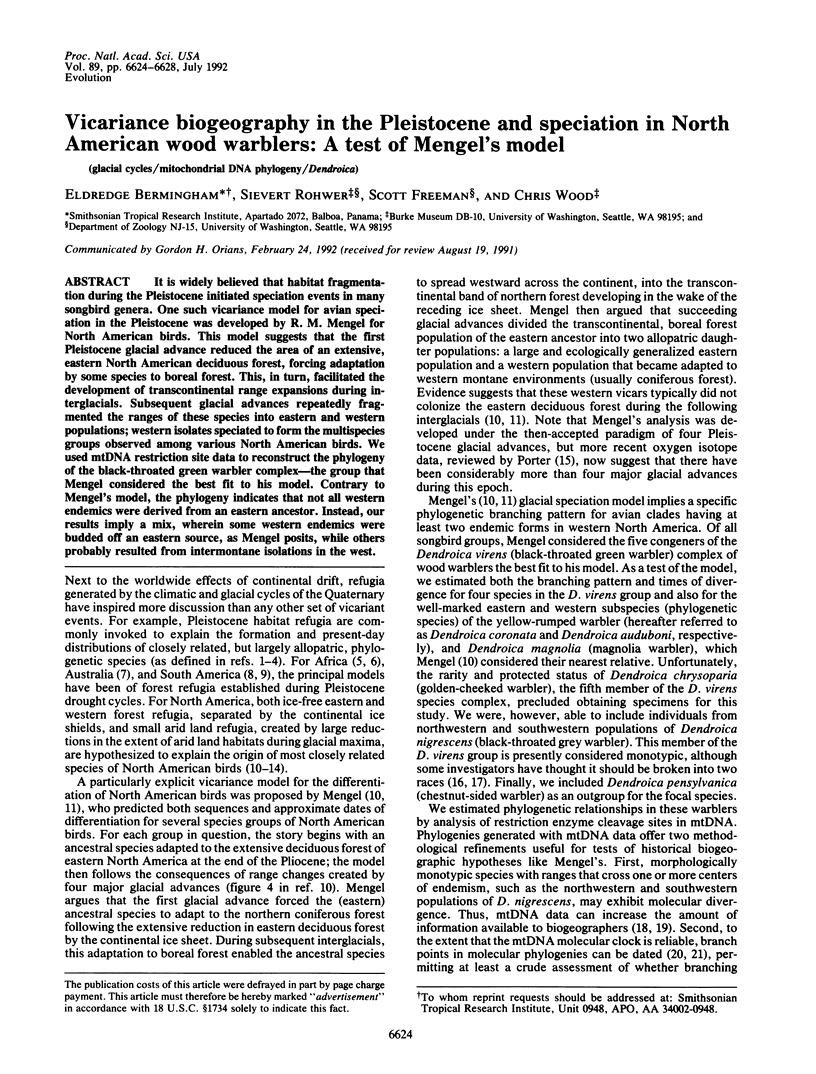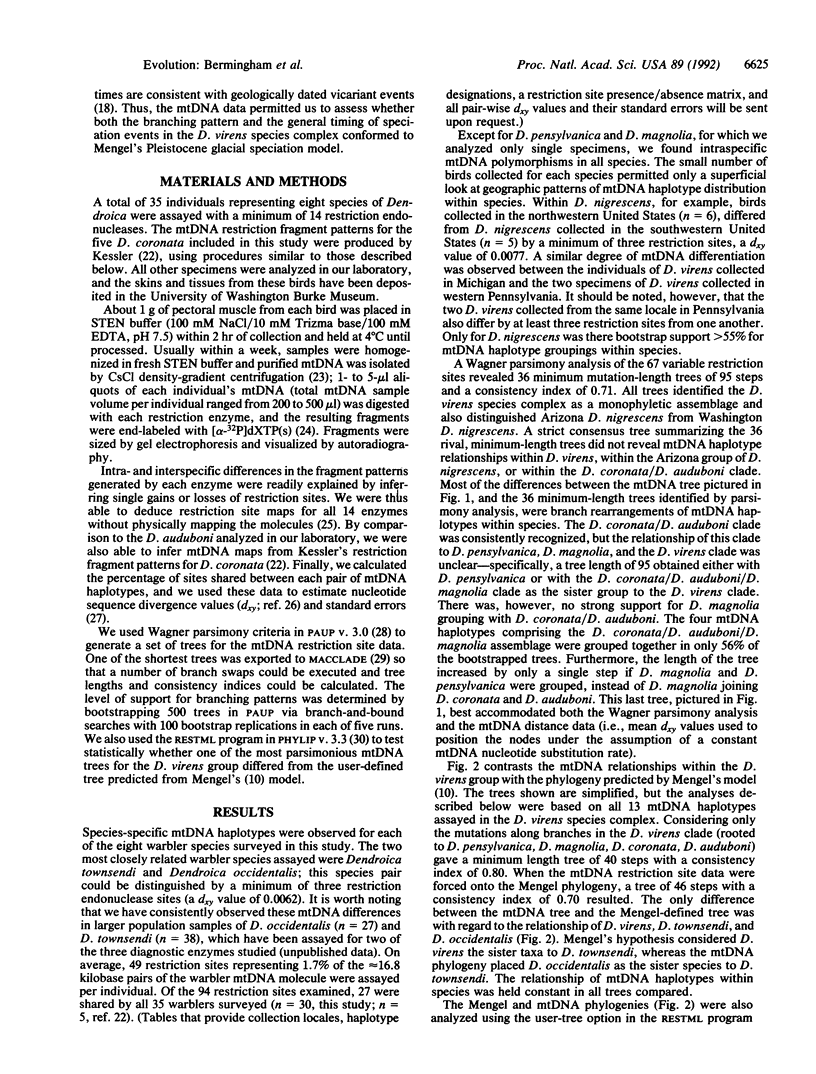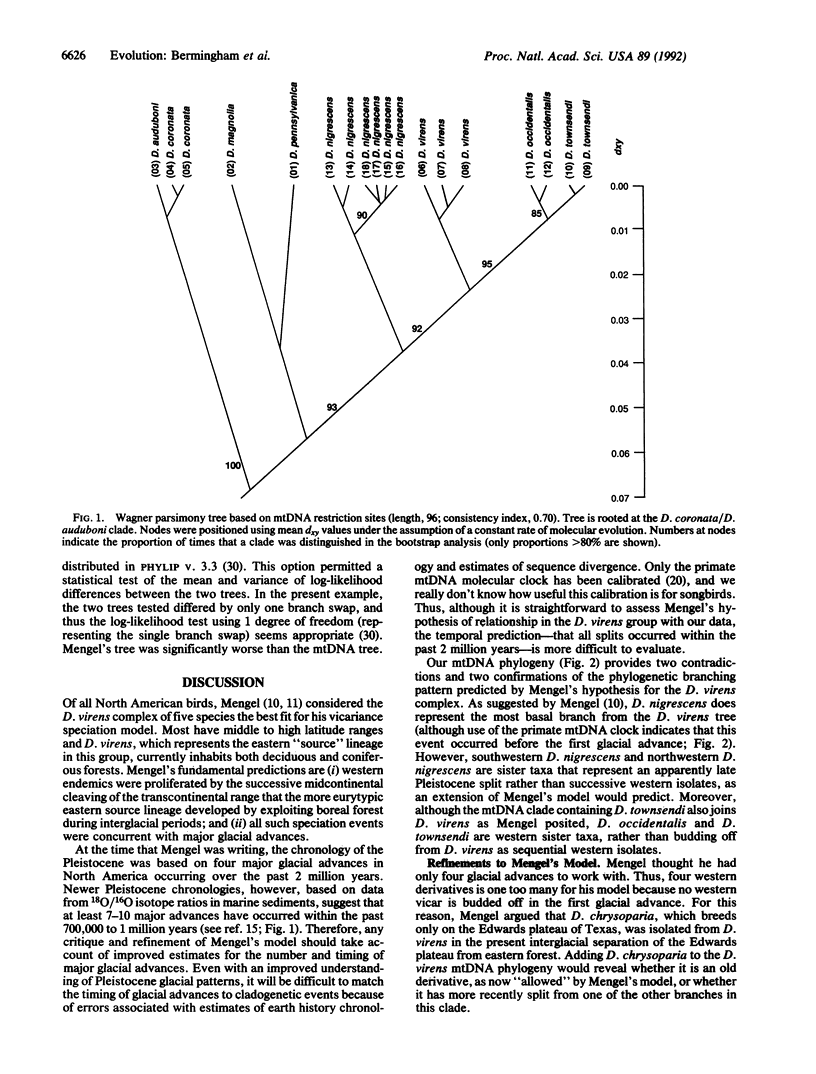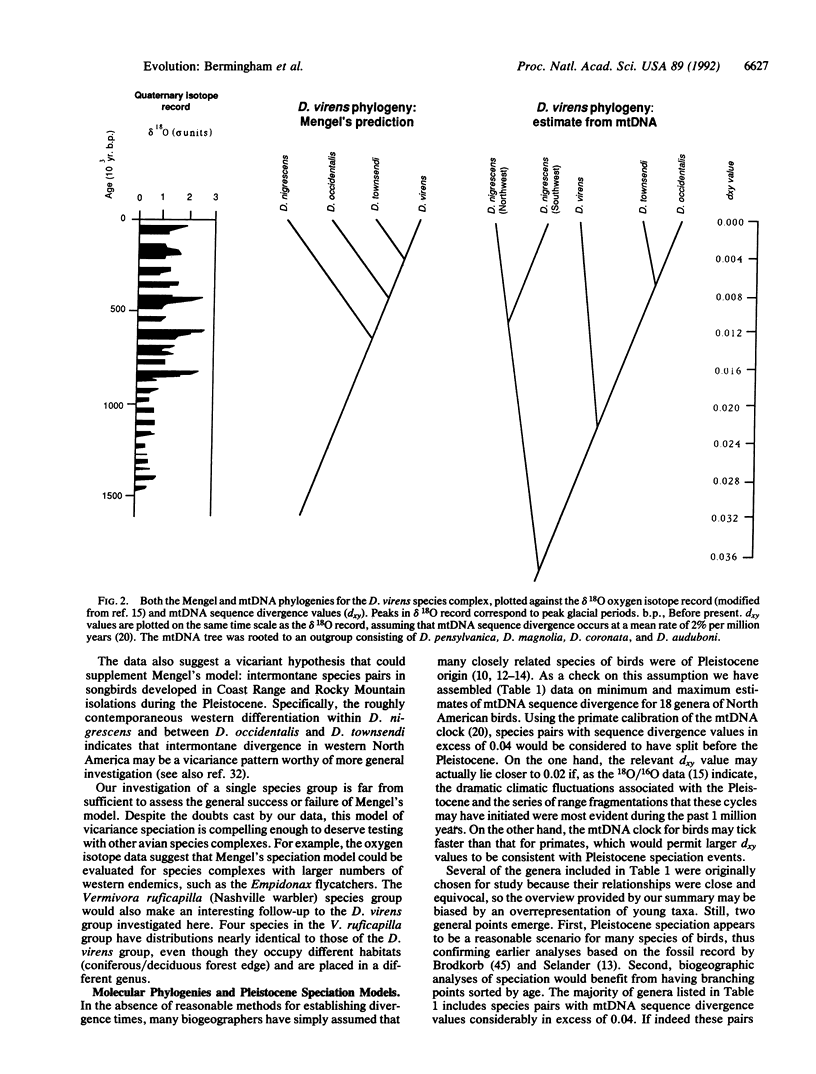Abstract
It is widely believed that habitat fragmentation during the Pleistocene initiated speciation events in many songbird genera. One such vicariance model for avian speciation in the Pleistocene was developed by R. M. Mengel for North American birds. This model suggests that the first Pleistocene glacial advance reduced the area of an extensive, eastern North American deciduous forest, forcing adaptation by some species to boreal forest. This, in turn, facilitated the development of transcontinental range expansions during interglacials. Subsequent glacial advances repeatedly fragmented the ranges of these species into eastern and western populations; western isolates speciated to form the multispecies groups observed among various North American birds. We used mtDNA restriction site data to reconstruct the phylogeny of the black-throated green warbler complex-the group that Mengel considered the best fit to his model. Contrary to Mengel's model, the phylogeny indicates that not all western endemics were derived from an eastern ancestor. Instead, our results imply a mix, wherein some western endemics were budded off an eastern source, as Mengel posits, while others probably resulted from intermontane isolations in the west.
Full text
PDF




Selected References
These references are in PubMed. This may not be the complete list of references from this article.
- Ball R. M., Freeman S., James F. C., Bermingham E., Avise J. C. Phylogeographic population structure of Red-winged Blackbirds assessed by mitochondrial DNA. Proc Natl Acad Sci U S A. 1988 Mar;85(5):1558–1562. doi: 10.1073/pnas.85.5.1558. [DOI] [PMC free article] [PubMed] [Google Scholar]
- Bermingham E., Avise J. C. Molecular zoogeography of freshwater fishes in the southeastern United States. Genetics. 1986 Aug;113(4):939–965. doi: 10.1093/genetics/113.4.939. [DOI] [PMC free article] [PubMed] [Google Scholar]
- Brown W. M., George M., Jr, Wilson A. C. Rapid evolution of animal mitochondrial DNA. Proc Natl Acad Sci U S A. 1979 Apr;76(4):1967–1971. doi: 10.1073/pnas.76.4.1967. [DOI] [PMC free article] [PubMed] [Google Scholar]
- Drouin J. Cloning of human mitochondrial DNA in Escherichia coli. J Mol Biol. 1980 Jun 15;140(1):15–34. doi: 10.1016/0022-2836(80)90354-x. [DOI] [PubMed] [Google Scholar]
- Haffer J. Speciation in amazonian forest birds. Science. 1969 Jul 11;165(3889):131–137. doi: 10.1126/science.165.3889.131. [DOI] [PubMed] [Google Scholar]
- Kessler L. G., Avise J. C. A comparative description of mitochondrial DNA differentiation in selected avian and other vertebrate genera. Mol Biol Evol. 1985 Mar;2(2):109–125. doi: 10.1093/oxfordjournals.molbev.a040339. [DOI] [PubMed] [Google Scholar]
- Lansman R. A., Shade R. O., Shapira J. F., Avise J. C. The use of restriction endonucleases to measure mitochondrial DNA sequence relatedness in natural populations. III. Techniques and potential applications. J Mol Evol. 1981;17(4):214–226. doi: 10.1007/BF01732759. [DOI] [PubMed] [Google Scholar]
- Nei M., Miller J. C. A simple method for estimating average number of nucleotide substitutions within and between populations from restriction data. Genetics. 1990 Aug;125(4):873–879. doi: 10.1093/genetics/125.4.873. [DOI] [PMC free article] [PubMed] [Google Scholar]
- Nei M., Tajima F. Maximum likelihood estimation of the number of nucleotide substitutions from restriction sites data. Genetics. 1983 Sep;105(1):207–217. doi: 10.1093/genetics/105.1.207. [DOI] [PMC free article] [PubMed] [Google Scholar]
- Shields G. F., Wilson A. C. Calibration of mitochondrial DNA evolution in geese. J Mol Evol. 1987;24(3):212–217. doi: 10.1007/BF02111234. [DOI] [PubMed] [Google Scholar]


